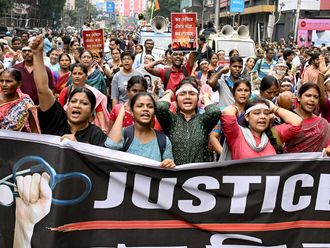Mingora: A year after Pakistan launched a major operation to evict the Taliban from Swat Valley, markets are bustling and girls are back at school, but the root causes of the conflict still fester.
For two years the Taliban paralysed much of the valley by promoting a repressive brand of Islamic law, opposing secular girls' education and beheading opponents until the government ordered in thousands of troops.
At only 125 kilometres northwest of Islamabad, its mountains were once a weekend getaway and ski resort.
Offensive
As the offensive began, around two million people fled the district but a year later many are back, trying to rebuild their lives.
"Normalcy has returned... All segments of society are open and functioning," said Qazi Jamil, the new chief of 15,000 police serving three million people in the wider Malakand region, which includes Swat.
Girls in white headscarves walk to school, laden with books. Markets are cluttered with chickens, oranges and vegetables. Shutters are painted with the green and white Pakistani flag to signal opposition to the Taliban.
But threats and tensions remain. On February 22, the same day Jamil arrived to take up his new job, a suicide bomber killed nine people.
"The element of threat is still there unfortunately," said Jamil.
Keen to address the causes of the insurgency, the civil administration wants international donors to accelerate reconstruction and rehabilitation, and for police to take over from the army as quickly as possible.












